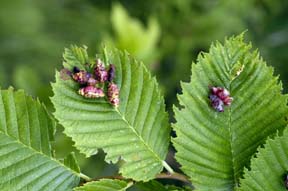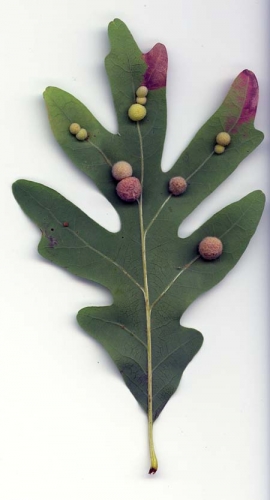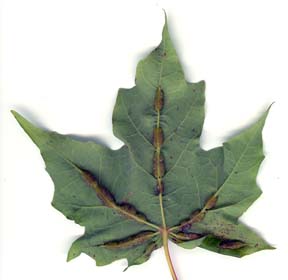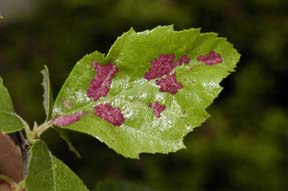Not all galls are created equal in the plant world
Insects and mites cause a variety of galls on plants that are often not a serious problem to its health and vigour.
Galls are commonly found on many types of plants and usually are not a significant problem. Galls can be formed in several ways, but there is usually a specific insect, mite or plant disease organism involved. Plant galls are growths of abnormal plant tissues that occur on leaves, twigs, roots, flowers or any other parts of a plant. Most galls are caused by irritation or stimulation of plant cells due to the presence or activity of another living organism. Typically, the causal organism produces particular chemicals that act like plant growth hormones, stimulating the growth of abnormal plant tissues. In some cases, the gall tissues will continue to grow even after the causal organism is no longer present.
Plant galls vary greatly in shape, size and color, depending on the particular species interactions that cause them. In some cases, the gall is simply a swelling of plant tissues, but there are many galls that have complicated shapes and forms that really stand out from the surrounding tissues of the plant. Galls on leaves are usually of no consequence to the health of plants, but if galls are formed in stems or branches, they can lead to dieback or a weakened structure that may break off easily. The majority of commonly seen plant galls are caused by insects or mites. Wasps, flies, aphids and their relatives are the insects that cause the most galls.

Aphid galls on elm. Photo credit: Duke Elsner, MSUE.
The wasps that cause galls are very small, usually less than 0.25 of an inch in length and they do not sting. The process begins when the adult female wasp inserts an egg into the plant, often into a bud or vein of a leaf. The presence of the egg and later the developing grub induces the gall tissues to enlarge around the insect. The grub of the wasp stays protected and well fed inside the gall tissues. Sometimes many grubs can be found in one gall. Eventually, the grub pupates inside the gall, and the transformation to an adult wasp takes place. The adult wasps chew their way out of the gall.

Galls on white oak formed by gall wasps. Photo credit: Duke Elsner, MSUE.
The flies that induce galls are very small and delicate. The adult female fly lays eggs in areas of soft plant tissue, often on leaves or near buds. The fly maggots that hatch become surrounded by the growing gall tissues. Since adult flies do not have jaws and cannot chew their way out of a gall, the galls caused by flies grow in a manner that leaves a natural opening in the tissues for the adult to escape.

Galls on maple formed by gall flies. Photo credit: Duke Elsner, MSUE.
The galls of aphids and their relatives originate in a manner similar to those of the flies, with the gall tissues growing around the insect and some sort of natural opening for the insect to get out again when it is full grown.
The mites that cause galls are typically very tiny, so small they cannot be seen even with a good hand lens. Adult mites typically pass the winter months under the scales of buds. When the new leaves emerge in the spring, the mites move out onto the surface of the leaves and begin to feed. Their feeding induces abnormal plant tissues to form as hollow pockets or extensions of the leaf surface. The mites move to the inside of these structures for the rest of the growing season. Some of the mite induced deformities have a quite different nature, consisting of thousands of tightly-packed leaf hairs which provide shelter for the mites on the leaf surface. This type of deformity is usually called an “erineum” gall.

Erineum patch on birch. Photo credit: Duke Elsner, MSUE.
If you have an interest in plant galls, one of the best places to look for them is on an oak tree. Oaks are hosts to several hundred different gall-forming insects and mites. You’ll find standard galls in numerous shapes, sizes and colors on leaves, stems and branches – even on the acorns. An otherwise healthy oak can withstand all of the galls without any significant loss of growth or form.
Erineums are often very common on beech and sugar maple. The erineum on beech forms at the junction of veins on the underside of the leaves. The sugar maple erineum forms on the upper surface of leaves and it is often bright pink or red in color.



 Print
Print Email
Email


